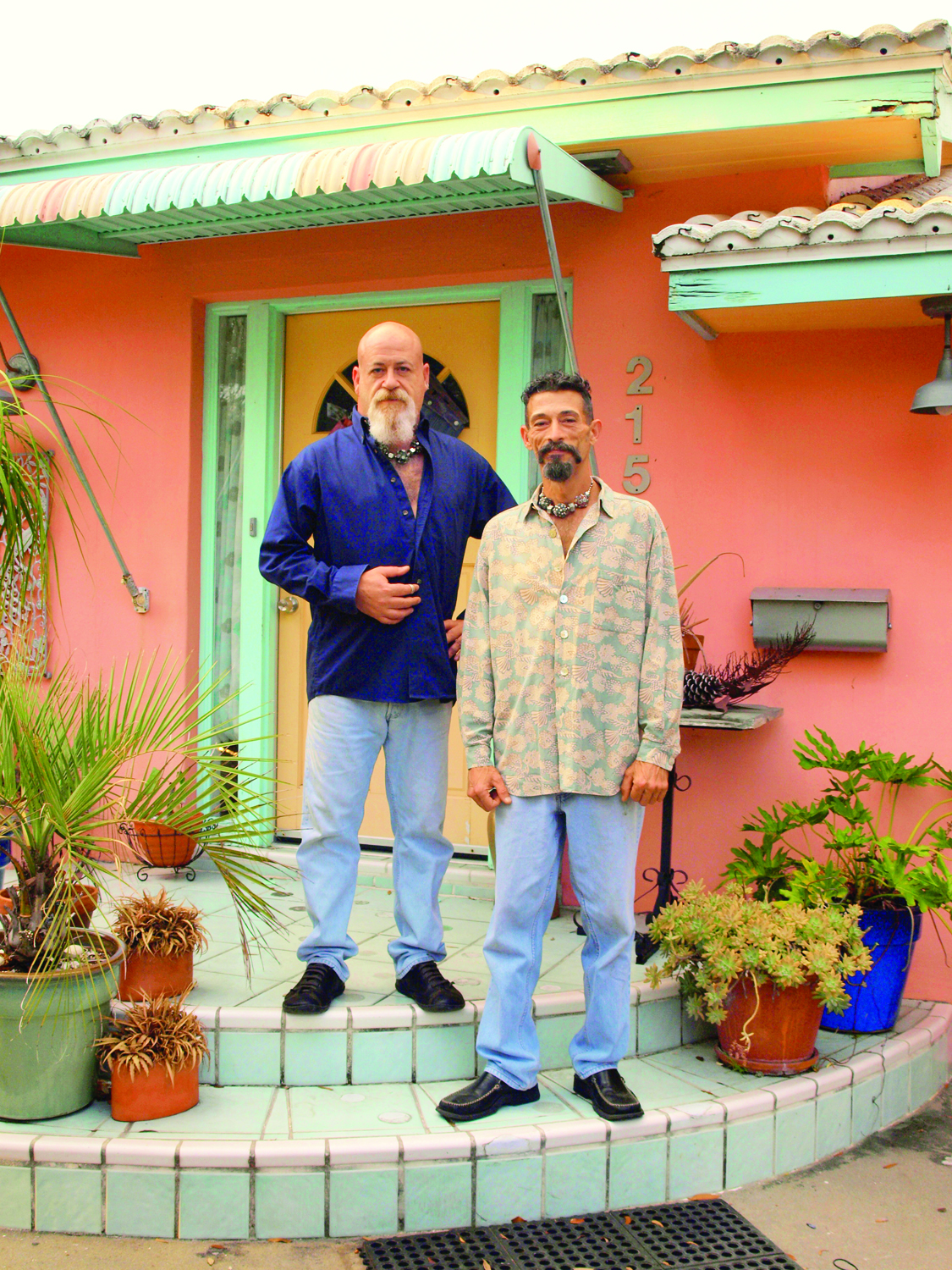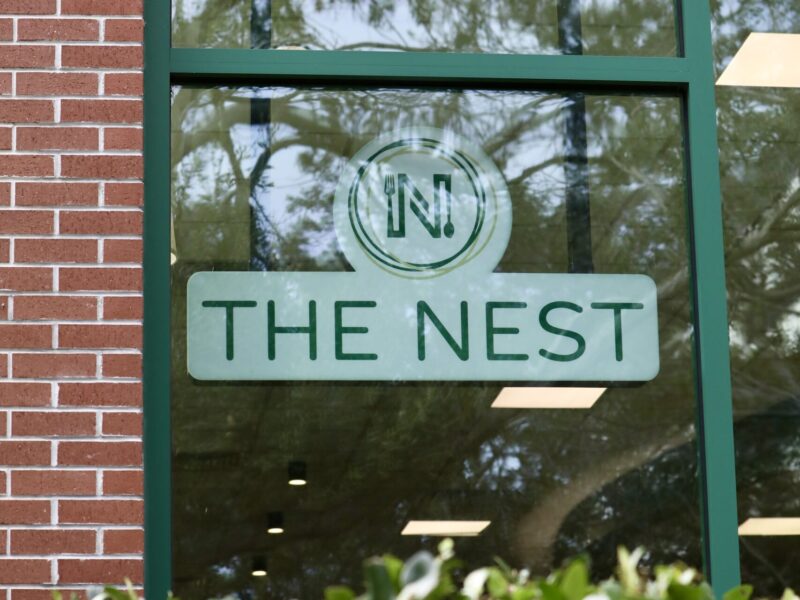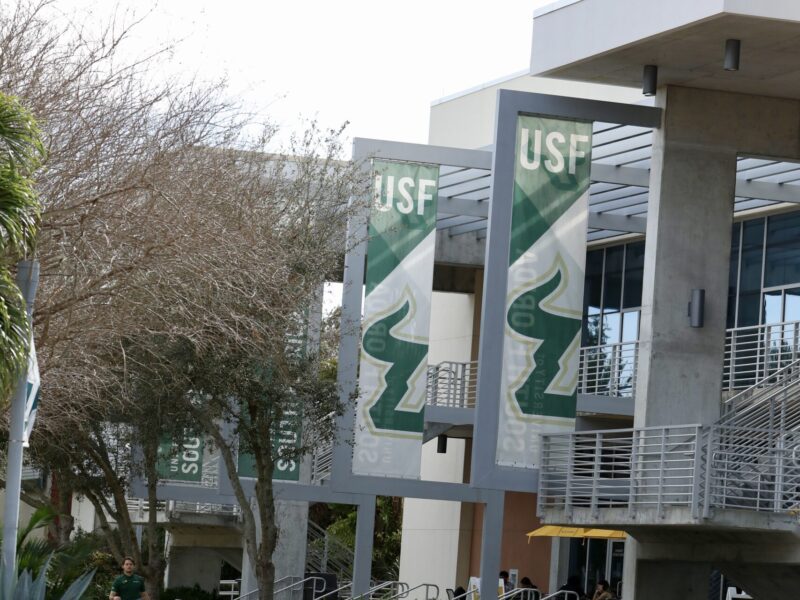“What a good find! This is going to make a great purse,” Scott Durfee says, stroking his coarse black beard for inspiration. He reaches down to pick up the gnarly rigged object. A nauseating aroma fills his lungs. As he coughs out the overwhelming stench, another voice chimes in.
“Here’s the hinge, here’s the strap,” says George Medeiros. They snatch up bits and pieces of scrap metal, hooks, rusty bike chains and some bent copper wires from the debris at the St. Petersburg recycling center near the city dump.
Florida citizens create more than 29 million tons of solid waste per year, according to the City of St. Petersburg Recycling Center, and local artists Durfee and Medeiros are trying to help the community do away with its excess waste.
Durfee remembered the joy it brought him as a child to construct anything he could from organic materials. He worked in the family business of creating holiday baskets and floral arrangement wreaths, and his grandparents owned a greenhouse.
“I saw beauty in what I was doing,” Durfee said. “It was truly heartfelt. And my grandparents profited very well from what all of the kids produced.”
Medeiros wears a cobalt blue button-down dress shirt with only three buttons fastened, leaving his chest slightly exposed to display his handmade jewelry.
Born with a desire to create, Medeiros remembers being an 8-year-old boy collecting fall leaves. He would press them, arranging the leaves on a piece of wood, then shellacking them so that visiting family members could take home a souvenir of New England’s colorful foliage.
Durfee and Medeiros met in 1989, and by the time they found their new medium in the recycling lots near landfills, they had plenty of years of experience in organic construction. What they found when they moved to Florida was spathe, the outer casing of the bloom of the palm. Thin rigged lines made up the texture of its skin.
At times when working with the medium, Durfee and Medeiros would disagree. Durfee wanted to maintain the spathe’s truest form while Medeiros wanted to mold the medium to his exact liking. But they always agreed they wanted it to have an “industrial edge.” To achieve this effect, they would incorporate nails, metal wiring, hinges or chains into their designs.
Ysa Taylor, a freshman in the USFSP graphic design program, said there are difficulties with using recyclable material for art.
“You’re given a choice to work within the confines of the object or to truly create a new potential for the object in pushing the limits of how it can be used,” Taylor said. “At times you can be limited with just how far a material will go.”
According to the Food and Agriculture Organization of the United Nations, the palm spathe has been used in many ways throughout history. Some tribes would weave it into sleeping mats or hanging storage baskets after soaking it in water. After palm spathe was burned, its ashes were also used as a key ingredient in creating cement.
Durfee and Medeiros decided to create yard art from the organic plant waste, getting their inspiration from Christmas decorations of pinecones, wreaths and other art forms using nature-based material. They called themselves Spath’oes.
One year they created Christmas ornaments from the spathe, introducing metals and glass into the construction. What started out as yard art for the holidays attracted more neighborhood eyes than expected.
“We had them out and the people just went crazy. They wanted to buy them,” Medeiros said.
They started creating plant pods made from this recyclable material for local home tours. They began to be used for interior decoration as well, hanging on the walls and from ceilings. The recycled art was helping the landfill pile decrease, and drawing the community in closer and forming relationships.
“The best part of working with people in the community is the level of passion that you experience,” said Reuben Pressman, USFSP graduate and co-founder of Tampa Bay Swings, a non-profit organization that installs handmade swings in unexpected public places around Tampa Bay. “When people care about the place they live in, they just want everyone else to experience that same relationship and they’ll do everything it takes to make sure that happens.”
Durfee and Medeiros continued to explore new ideas and take the local community’s feedback into consideration. They began to really push the limits of the medium when a Sarasota fashion show named Eye Concepts invited them to create a piece of wearable art. A hot pink and burnt orange “Spatheolicious” fashion piece strutted down the runway. It was their first fashion piece.
“We started getting requests like ‘Do you have something you can sell in out boutique made out of your medium?’ ” Durfee said.
Medeiros began to design jewelry from seedpods that fall from the southern Sweetgum trees every fall that he would find along the curbs of his street. Durfee went to work with the spathe, designing purses organically shaped with chains, leather ties, snaps and buttons.
“I think a huge part of any business’ success for any community, whether it be their community of clients, customers, or direct interaction with people in their neighborhood, depends largely on their willingness to shift an idea in favor of the greater good,” said Hunter Payne, artist and co-founder of Swings Tampa Bay.
Durfee and Medeiros always try to think “outside of the box” with their art, something Maria Cuahutle, 10-year artist and graphic design major, can relate to.
“In a way, every material has its own potential to becoming something outside of its intended nature,” she said. “Small things that most people throw away or take for granted can have multiple purposes if you explore around with the material enough.”
With only 9.5 percent of St. Petersburg homes involved in the recycling program, according to a report from The Tampa Bay Times, businesses like Spath’oes have the right idea for helping recycling.
“The ‘green’ planet friendly movement is such an important part of our culture right now quite honestly,” Taylor said. “As artists we are held accountable to make a political statement. By becoming a part of this movement I think it gives purpose and a higher value to things that might otherwise be discarded improperly.”
Photo by Jennifer Garcia
Local Artists George Medeiros (left) and Scott Durfee (right) make artwork out of St. Petersburg’s thrown away treasures.




Great article. I would have loved to see some photos of the recycled art that was created. Can you add some?